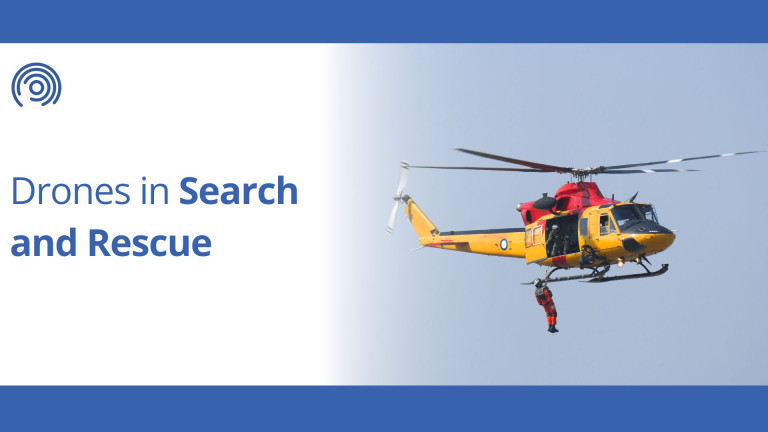
Drones have proven to be a vital attribute to search and rescue missions. At least 750 people around the world have been rescued as a direct result of drone technology, according to official stats from DJI.
SAR Goes Further With Drones
Drones can safely travel further distances, navigate high-risk locations, and be deployed quickly and cost-effectively. Many SAR operations occur in adverse weather conditions, and drones reduce the danger to rescuers, along with having zero negative impact on emissions.
Some enterprise models come with loudspeakers and spotlights for enhanced mission versatility, as well as drone data to build 2D maps and 3D models for vital situational awareness.
Case Study - Buxton Mountain Rescue
The Buxton Mountain Rescue Team (BMRT) is one of 49 voluntary Mountain Rescue Teams within England and Wales and one of seven teams within the Peak District region. The team was first established in 1964 following the Four Inns tragedy, which claimed the lives of three young rover scouts while they were taking part in a planned walking event in bad weather.
Today the team has around 60 highly trained volunteers, four emergency response vehicles, two bases and around 100 incidents a year. Incidents include: going to the aid of ill or injured people in hilly terrain, searching for the lost or vulnerable, rescuing from heights, assisting in major incidents such as floods and much more.
In March 2019, BMRT began using drones for SAR, becoming the first team in England and Wales to gain a 'PfCO' from the CAA. They started with two DJI Mavic drones and later added a DJI Mavic 2 Dual with thermal capabilities, donated by Derbyshire Constabulary, enabling night searches.
Buxton Mountain Rescue highlights the importance of drones in assisting SAR, however it has also demonstrated their use in related services. For example, the team assisted with monitoring moorland fires recording damage and identifying water sources.
The Best Drones for the Job
Search and rescue operations can be enhanced with the addition of drone docks.
Drone docks are automated stations for deploying, charging, transferring data, and housing UAVs. Serving as launch and landing pads, they enable continuous tasks like surveillance, delivery, and search and rescue. These smart docks enhance drone operations, allowing autonomous functionality across various applications.
Docks such as the recently released DJI Dock 2. The DJI Dock 2, which is smaller and more capable than its predecessor, makes it easy and safe to deploy Matrice 3D or 3TD drones. To improve the efficacy and quality of unattended operations, Dock 2 is small, provides high-level operation capabilities, and uses intelligent functions hosted in the cloud.
Popular DJI drones used in SAR include:
DJI M300 RTK
DJI Mavic 3 Enterprise
Visit the Drone Safe Store website for enterprise tech or visit our showroom in Chichester, West Sussex.
Unit 1K, St James' Industrial Estate, Westhampnett Rd, Chichester PO19 7JU
01243 859444


